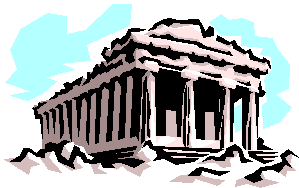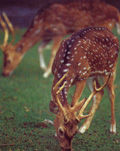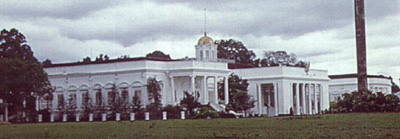In colonial days, deer were raised in
the parklands to provide meat for banquets, and through the gates you can still
see herds of white-spotted deer roaming on the immaculate lawns. The Dutch elite
would come up from the pesthole of Batavia and many huge, glamorous parties
were held there. Following independence, the palace was a much-favoured retreat
for Soekarno, although Soeharto has ignored it.
Today the building contains Soekarno's huge art collection of 219 paintings and
156 sculptures (which is reputed to lay great emphasis on the female figure),
but the palace is only open to the public by prior arrangement. The tourist
information centre can arrange tours for groups or you can write directly to
the Head of Protocol at the Istana Negara, Jalan Veteran - Jakarta.
You need to give at least five days notice. If a tour is going the tourist
information centre will try to include interested individuals. Abu Pensione
(see Where to Stay page) also makes regular bookings for tours.
|
|
Pada masa kolonial, kijang diternakkan yang dagingnya diambil untuk pesta. Saat
ini Anda masih dapat melihat dari balik pagar istana 300 ekor lebih kijang
berbintik-bintik putih yang berkeliaran di halaman istana.
Setelah kemerdekaan, Istana Bogor dijadikan tempat peristirahatan presiden
Soekarno. Saat ini Istana Bogor hanya dipakai untuk menyimpan koleksi seni
peninggalan presiden Soekarno berupa 219 lukisan dan 156 seni pahat. Istana
Bogor dapat dikunjungi apabila sudah ada ijin khusus. Pusat informasi wisata
dapat mengaturnya untuk rombongan wisata atau Anda dapat juga langsung meminta
ijin dengan cara menulis surat permohonan yang ditujukan ke
Kepala Protokol di Istana Negara Jl. Veteran - Jakarta
paling lambat 5 hari sebelumnya. Bila
ijin sudah keluar, pusat informasi wisata dapat mengikutkan perorangan yang
berminat. Abu Pensione (lihat halaman Where to Stay)
dapat juga melakukan pemesanan untuk diikutkan tour bagi Anda. |





